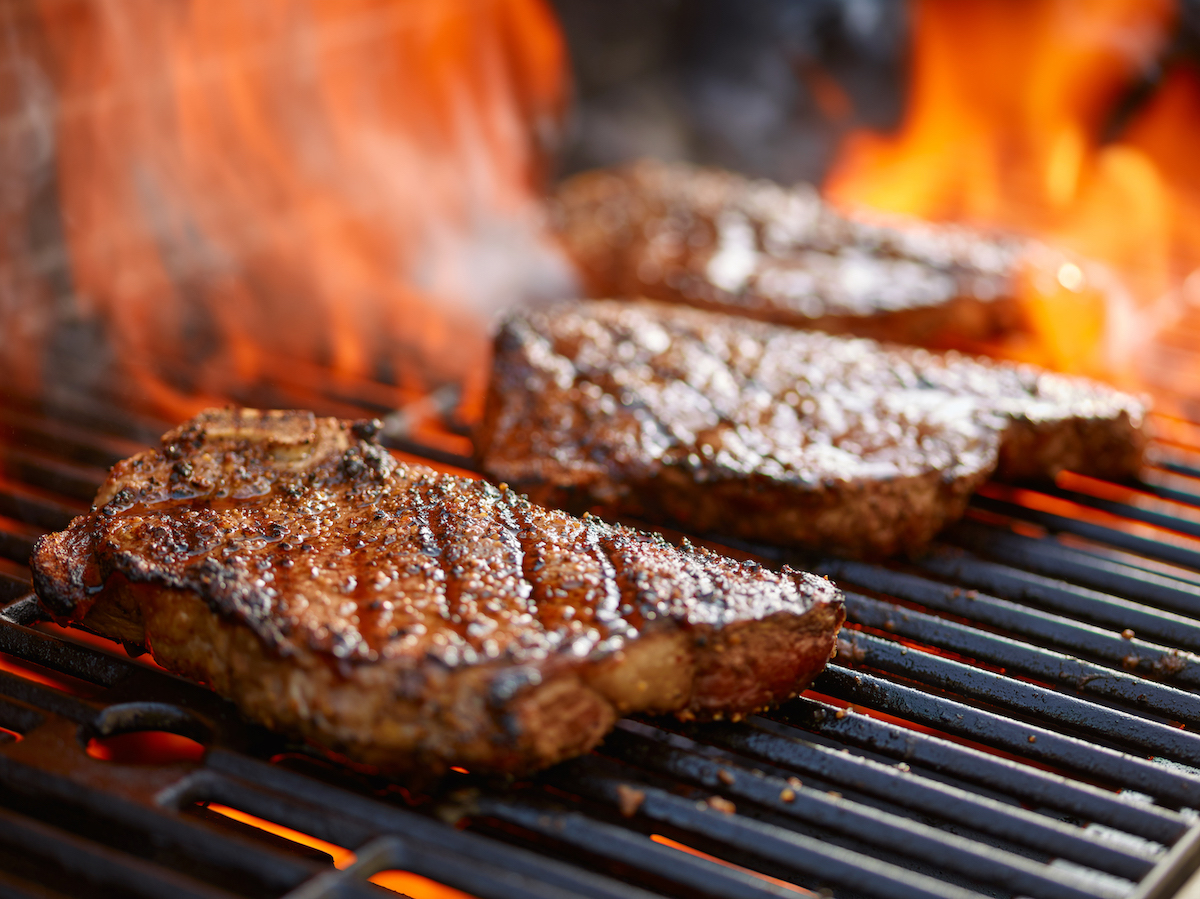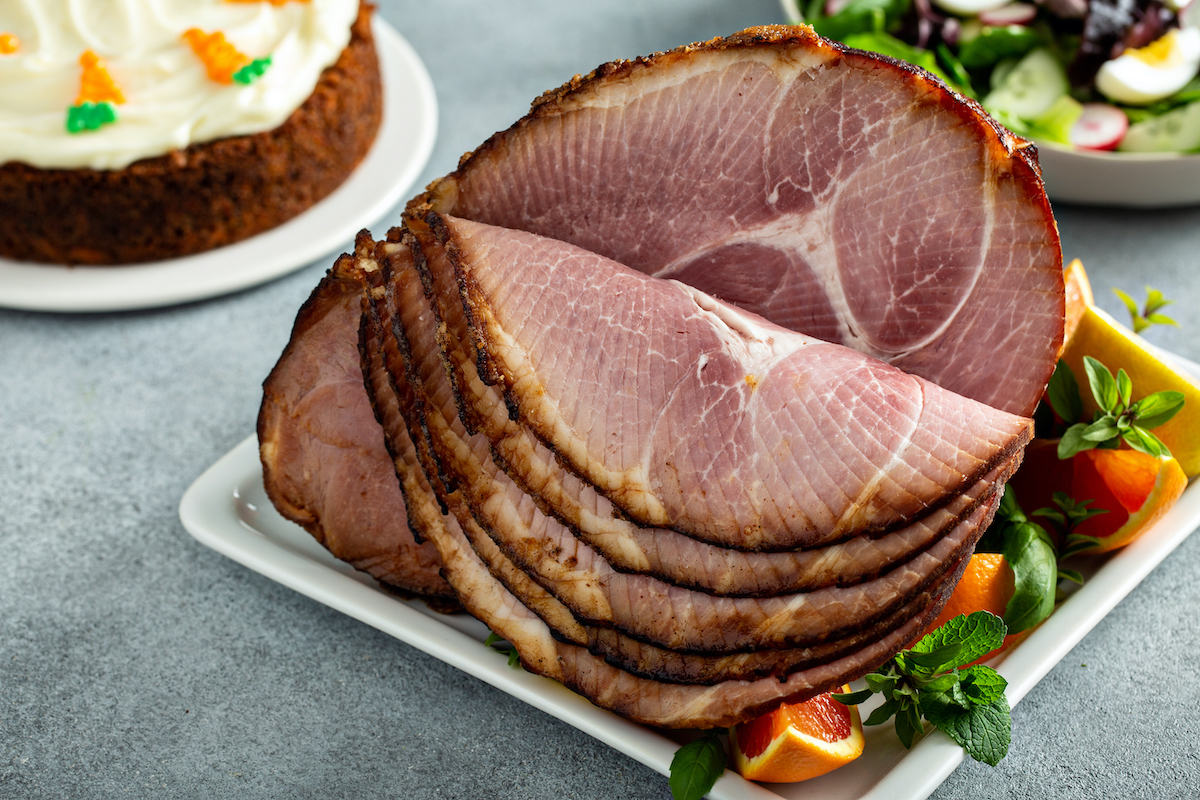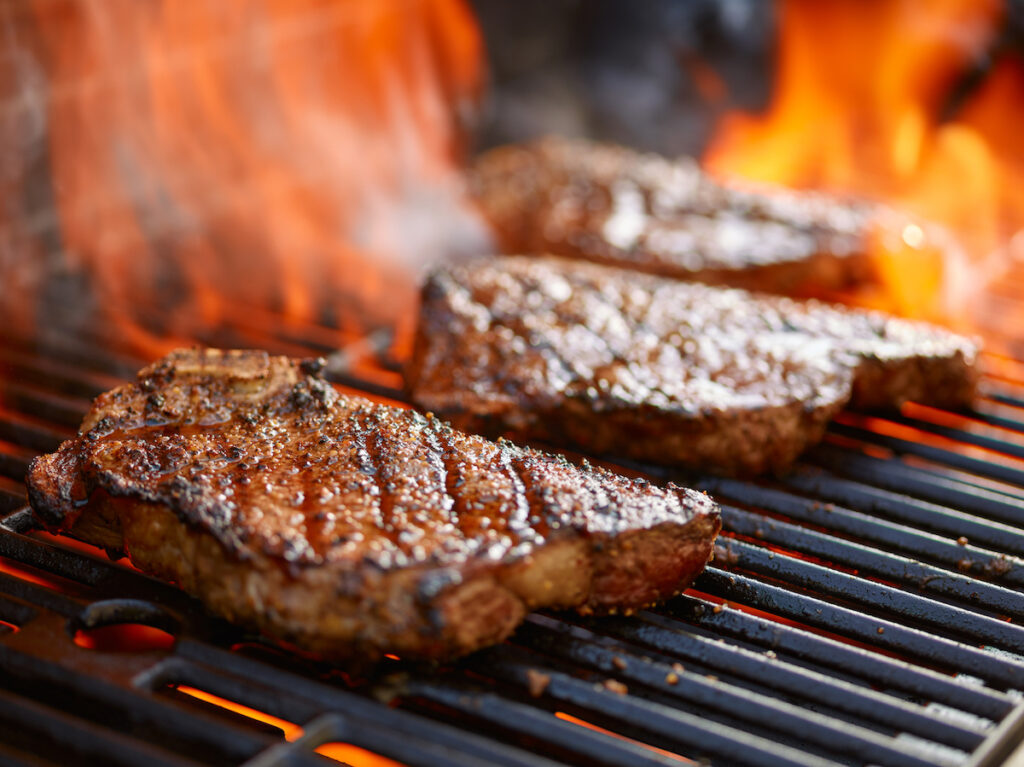
Imagine a group of engineers and fabricators who love a great, tender steak. Or who enjoy the flavor and texture of a bone-in ham that carves well and tastes amazing with every slice. You can almost hear them discussing the chemistry and mechanics behind creating the best whole-muscle meats possible.
They think the process through, running the numbers, fabricating and testing meat processing prototypes, and putting a fork to the results. They even buy competitors’ meat tumblers and test their results against the prototypes. They adjust, they create, they fire up the “test grill.”
And when they discover excellence, they deliver it to the world.
Welcome to Meat-on-Meat Massage™ from Challenge RMF. Designed with a proprietary mechanical action, our meat massaging technology tenderizes muscle and activates proteins at the muscle’s core without inflicting damage to the surface, meat fibers, or connective tissues.
Contact us for a demonstration, and read on to understand the true tech of tenderness for whole muscle meats.
Stopping the Tumble Stumble
You can find meat tumblers, from industrial grade to countertop size, almost anywhere. Unfortunately, they don’t have a label on them that says “Use with Caution: Destroys Muscle Fibers.”
Most meat tumblers use hydraulic shock to “tenderize” their contents. You can equate this violent process to punching, hitting, slapping and dropping meat.
This process supposedly makes the meat more receptive for marinades, brines, and other flavoring and moisture-enhancing additives. However, the shock also destroys the tissues and gives them inconsistent flavor and texture.
Tumbling: A Drum Full of Damage
The problem comes from a tumbler’s design. The flights inside an average industrial meat tumbler run straight down the drum. This is the fastest and easiest way to weld inside a drum, creating a cheaper product on the retail side.
But you pay the price in the end product. As the drum rotates, the flights lift up the meat inside until the angle changes enough for the muscles to fall down to the bottom of the drum.
This abrasive tumbling action breaks apart the outer layers of meat fibers. As the meat continues to crash down in the drum, muscle cells burst and protein escapes. Production facilities end up with a pulpy texture on the meat’s surface to a depth of 1/4 to 1/2 inch into the muscle.
In an ironic twist—though the outer layer of muscle tissue becomes soft and mushy, the muscle’s core receives no tenderization.
Tumbling Makes Meat Dryer
The protein that escapes from the beat-up muscle cells mixes with water, forming an oversaturated emulsion layer on the muscle surface. This wet layer acts as a moisture shield, stopping further water penetration into the muscle interior.
The final product? A dry muscle interior and an oversaturated, wet muscle exterior.
For example, when you cut into an average cooked tumbled ham, it has dark areas with a dry, sandpaper-like, hard texture. Lighter, softer, and moist areas surround these darker ones, and when they get squeezed—free liquid exudes from between these adjoining muscles.
That does not sound like the quality your customers expect, nor the reputation your company wants associated with your brand.

Make It Better With Massaging
Challenge RMF’s unique meat massaging technology delivers superior performance for superior end product.
It’s All in the Design
The engineers at Challenge RMF realized that hydraulic shock delivered an unappealing end product. The way muscles move inside the drum should allow both additives and tenderization to penetrate equally throughout the entire muscle—without destroying the muscle’s integrity.
That’s where our proprietary rolling/massaging action excels. The helical flights inside our drums provide a dual benefit:
- Muscle interior and exterior undergo the same intensity of applied massage energy.
- The helical flights improve the drum’s structural integrity for longer-lasting reliability.
How Meat-on-Meat Massage™ Makes Magic
As the meat moves along the curved, continuous helical flights, it rolls over onto itself, massaging the tissue via external friction and the press-and-release of the content’s weight.
The elliptical path built into our meat massaging technology ensures that every drum turn massages every piece of the product, resulting in a 100% live load with zero dead spots.
We expertly weld our helical flights so that they don’t rotate independently of the drum. With a Challenge RMF meat-on-meat massager/marinater, you won’t lose yield to muscle shear, skin separation, or fat cover damage.
This non-impact, constant massaging action encourages the gradual penetration of your brine/marinade into the interior of the muscle.
The marinade migrates from fiber to fiber without rupturing the cell walls, preserving the integrity of the whole muscle while increasing flavor, tenderness, and yield.
Your product will also purge less inside the packaging. This keeps the meat moist and reduces the distasteful gush of liquid when the consumer removes your product from the packaging.
The Inside Track on Yield
You will achieve higher success rates addressing yield challenges with Challenge RMF’s meat massage technology.
Meat-on-Meat Massage™ disrupts deep-core connective tissue while keeping the whole muscle intact. This disruption:
- Helps added ingredients bind with natural meat protein.
- Allows the muscle to enlarge without tearing and pulping.
- Provides uniform distribution throughout the muscle.
- Enhances a firm and meaty mouth-feel.
The Whole Approach for Whole Muscle
Challenge RMF meat massaging technology can be set to work gently or vigorously depending on the meat you wish to marinate and/or tenderize. This flexibility includes:
- Barrel incline
- Rotation speed
- Length of massaging
- Optional chilling jacket
- Optional vacuum accessories
Our drums can handle production capacity from 2500 pound to 22,000 pound batches. Our team will help you determine the right massager/marinater capacity, which accessories will best benefit your facility, and the placement of the massager/marinater within your facility.
Meat-on-Meat Massage™ evenly distributes brine and marinade in a variety of whole muscles, including:
- Beef—roasts, steaks, ribs, and more.
- Pork—shoulders, butts, loins, and more.
- Poultry—breasts, leg quarters, whole birds, and more.
- Seafood—fish filets, crab legs, and more.
Whole muscle and bone-in products need a slower, gentler action. With a faster and more intense rotation, processors can achieve the perfect outcome for sectioned products or chunked and formed products.
Customizing Settings for Excellent Product
We have spent decades perfecting meat massaging technology for 1 goal: helping our clients make excellent, top-quality meat products.
The mechanical action of meat-on-meat massage is a time-work intensity relationship. The length of processing time required depends upon the physical treatment intensity required for the pieces of meat.
The same rule applies to drum rotation speed. A higher speed creates greater mechanical action, and a slower speed provides more delicate action.
Always in Motion
No matter the setting you choose, the muscles never rest. They travel along the surface where they can expand. You can enhance the expansion by simultaneously applying our vacuum technology.
Then, they then travel at the bottom of the meat mass, where they are compressed by the weight of the meat on top of them.
This repetitive compression and relaxation uniformly tenderizes both the muscle tissue itself and also the connective tissues. After processing, the meat has become delicate and tender, while the muscle integrity remains preserved because the tissue matrix is not ruptured.
Ensuring Appetizing Meat Color for Cured Meat
Cured meat’s red color happens through a chemical reaction involving curing salts like nitrates and nitrites. When reduced to nitric oxide, these compounds bind with myoglobin in the meat to form nitrosomyoglobin, which gives cured meat its characteristic red hue.
Our meat massaging technology delivers an even distribution of nitrite throughout the muscle. The mechanical action accelerates nitrite and myoglobin interaction, promoting a rapid and uniform color development.
Without this technique, the curing process would rely on slow ingredient diffusion, requiring extended storage time for the desired color to emerge.

Try a Little Tenderness
Contact us and let’s set up a time to thoroughly discuss your project and your needs. Our team can deliver custom solutions and recommendations that will maximize quality for your customers and profitability for your bottom line.
We even offer the opportunity to test equipment at your site. Call us at 816.765.4101, and let’s talk turkey. Or chicken… pork… beef…
About Challenge RMF
For over 45 years, we’ve designed and built meat massager/marinaters, loaders/dumpers, cryogenic marinating technology, and more for manufacturers and processors.
Challenge RMF clients can reach our engineers and product specialists via phone, over email, and on-line. We’ve helped companies the world over, customizing and installing meat massaging technology products in a diverse number of production situations.
From brand-new equipment to replacement parts and repair service, we’re there when you want us and here when you need us. Come explore what’s possible with Challenge RMF.

